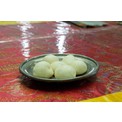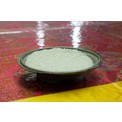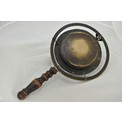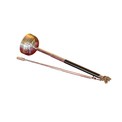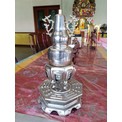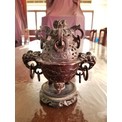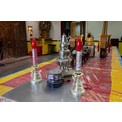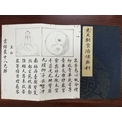-
History & Society
- Education in Pre-war Hong Kong
- History of Taikoo Sugar Refinery
- Hong Kong Products Exhibition
- Local Festivals Around the Year
- Post-war Industries
- Pre-war Industry
- The Hong Kong Jockey Club Archives
- Tin Hau Festival
- Memories We Share: Hong Kong in the 1960s and 1970s
- History in Miniature: The 150th Anniversary of Stamp Issuance in Hong Kong
- A Partnership with the People: KAAA and Post-war Agricultural Hong Kong
- The Oral Legacies (I) - Intangible Cultural Heritage of Hong Kong
- Hong Kong Currency
- Hong Kong, Benevolent City: Tung Wah and the Growth of Chinese Communities
- The Oral Legacies Series II: the Representative List of the Intangible Cultural Heritage of Hong Kong
- Braving the Storm: Hong Kong under Japanese Occupation
- A Century of Fashion: Hong Kong Cheongsam Story
Geography & EnvironmentArt & Culture- Calendar Posters of Kwan Wai-nung
- Festival of Hong Kong
- Ho Sau: Poetic Photography of Daily Life
- Hong Kong Cemetery
- Sketches by Kong Kai-ming
- The Culture of Bamboo Scaffolding
- The Legend of Silk and Wood: A Hong Kong Qin Story
- Journeys of Leung Ping Kwan
- From Soya Bean Milk To Pu'er Tea
- Applauding Hong Kong Pop Legend: Roman Tam
- 他 FASHION 傳奇 EDDIE LAU 她 IMAGE 百變 劉培基
- A Eulogy of Hong Kong Landscape in Painting: The Art of Huang Bore
- Imprint of the Heart: Artistic Journey of Huang Xinbo
- Porcelain and Painting
- A Voice for the Ages, a Master of his Art – A Tribute to Lam Kar Sing
- Memories of Renowned Lyricist: Richard Lam Chun Keung's Manuscripts
- Seal Carving in Lingnan
- Literary Giant - Jin Yong and Louis Cha
Communication & Media- Hong Kong Historical Postcards
- Shaw Brothers’ Movies
- Transcending Space and Time – Early Cinematic Experience of Hong Kong
- Remembrance of the Avant-Garde: Archival Camera Collection
- Down Memory Lane: Movie Theatres of the Olden Days
- 90 Years of Public Service Broadcasting in Hong Kong
- Multifarious Arrays of Weaponry in Hong Kong Cinema
-
History & SocietyGeography & EnvironmentArt & Culture
-
View Oral History RecordsFeatured StoriesAbout Hong Kong Voices
-
Hong Kong Memory
- Collection
- All Items
- Xian Tian Hu Shi Ji Lian You Ke, or The Anterior Heaven Ritual for Feeding, Saving and Refining Ghosts
Recently VisitedXian Tian Hu Shi Ji Lian You Ke, or The Anterior Heaven Ritual for Feeding, Saving and Refining Ghosts
During a salvation ritual, the ritual master turns the buns into food consumable for the ghosts according to Taoist ways. He then says the incantation while throwing the buns one by one before the altar as an offering of food for the hungry ghosts present at the ritual. During a salvation ritual, the ritual master cooks the rice on the spot in a Taoist alchemy stove. He then turns the cooked rice into food consumable for the ghosts present at the ritual according to Taoist ways. Dangzi is a ritual percussion instrument, and used together with the woodblock muyu. It is sounded by hitting a small mallet against a bronze disc. In a salvation ritual, the Inspector of Fasts usually plays the dangzi in tandem with the Chief Cantor who plays the muyu to guide the tempo of scripture chanting. This exhibit is an early ritual vessel from Sanyuan Temple in Guangzhou, now kept in Fung Ying Seen Koon. The picture shows handheld service bell from Sanyuan Palace. This service bell is sounded by holding its handle and shaking it so that its tongue hits the side. In a litany ritual, the high priest rings the zhenling bell three times according to the Taoist ways, summoning the spirits of the dead to come forward to the altar to hear the chanting of scripture. Like the dangzi, the muyu woodblock is a ritual percussion instrument. It is sounded by knocking a hollow woodblock resembling a fish with a wooden hammer. In a salvation ritual, the muyu is usually played by the Chief Cantor in tandem with the Inspector of Fasts who plays the dangzi to pace the scripture chanting.During a salvation ritual, the high priest opens the gate to the netherworld with the magical sword in accordance with Taoist ways, so that the dead can leave hell for the world of the living to hear the chanting of scriptures. The water jar is a ritual vessel for purifying the place where the rites are held. The high priest turns the water in the water jar into sacred water according to Taoist ways. While he reads aloud the incantation Jing Tiandi Shenzhou, he sprays ritual water with pomelo leaves to purify the ritual place. The yinqing consists of an inverted bell and a rod-shaped mallet, sounded by hitting the mallet against the bell. It has two functions: one is to show piety when extolling the gods and their sacred titles, and the other is to synchronise the movements of ritual masters during worship. During a salvation ritual, the ritual master cooks the rice with the alchemy stove on the spot, and then turns it into food consumable for the hungry ghosts according to Taoist ways. Cast from tin, this implement has a hollow design so water can be poured into it to cook rice. The base is decorated with King Wen’s Eight-trigram. The incense burner is a holder for incense. The Taoist incantation Zhu Xiang Zhou, or Incantation with Incense Offerings, says, “Tao is learnt through the heart; the incense is the conduit”. Burning incense is an important step in the ritual for evoking the gods and expressing one’s wishes.Candles were used on the altar in the olden days as a source of light. For safety and environmental reasons, electric candles are used instead today. Xian Tian Hu Shi Ji Lian You Ke, or The Anterior Heaven Ritual for Feeding, Saving and Refining Ghosts, is one of the texts used by the Quanzhen School of Hong Kong for salvation rituals. It consists mainly of three parts, namely feeding hungry ghosts, giving alms to those in the netherworld, and refining souls of the dead for deliverance. This exhibit is a handwritten script during the 1960s and 1970s in Fung Ying Seen Koon. It contains images of immortals, ritual vessels for ritual places, and illustrations of salvation of the dead in hell by the Heavenly Lord. It is mainly used for contemplation by ritual masters.Copyright © 2012 Hong Kong Memory. All rights reserved.
| Set Name |






